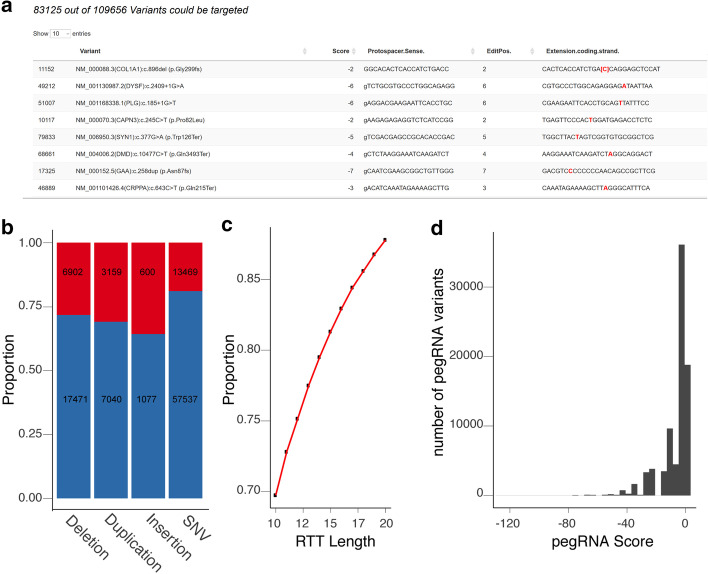Fig. 3.
pegRNA design for modelling all pathogenic and potentially pathogenic SNVs, insertions, duplications, and deletions in ClinVar. a Section of the output table after designing pegRNAs for a dataset of 109,565 variants. 83,125 variants were targetable using prime editing with a 13 nt RTT. b Quantification of different type of variants in the dataset and proportion of variants targetable with PE for each type highlighted in blue, not targetable in red, respectively. The black number in the bars represent the number of variants (RTT length: 13 nt). c Proportion of pathogenic and likely pathogenic variants targetable using different lengths of RT templates (10–20 nt). d Distribution of the ‘pegRNA-Score’ of the highest possible score for each variant (RTT length: 13 nt). Most pegRNAs have a score greater than − 20, showing that these are possibly functional pegRNAs with no major design penalties. Figures were produced using the package ggplot2 [37] with R (Version 3.6.3)

